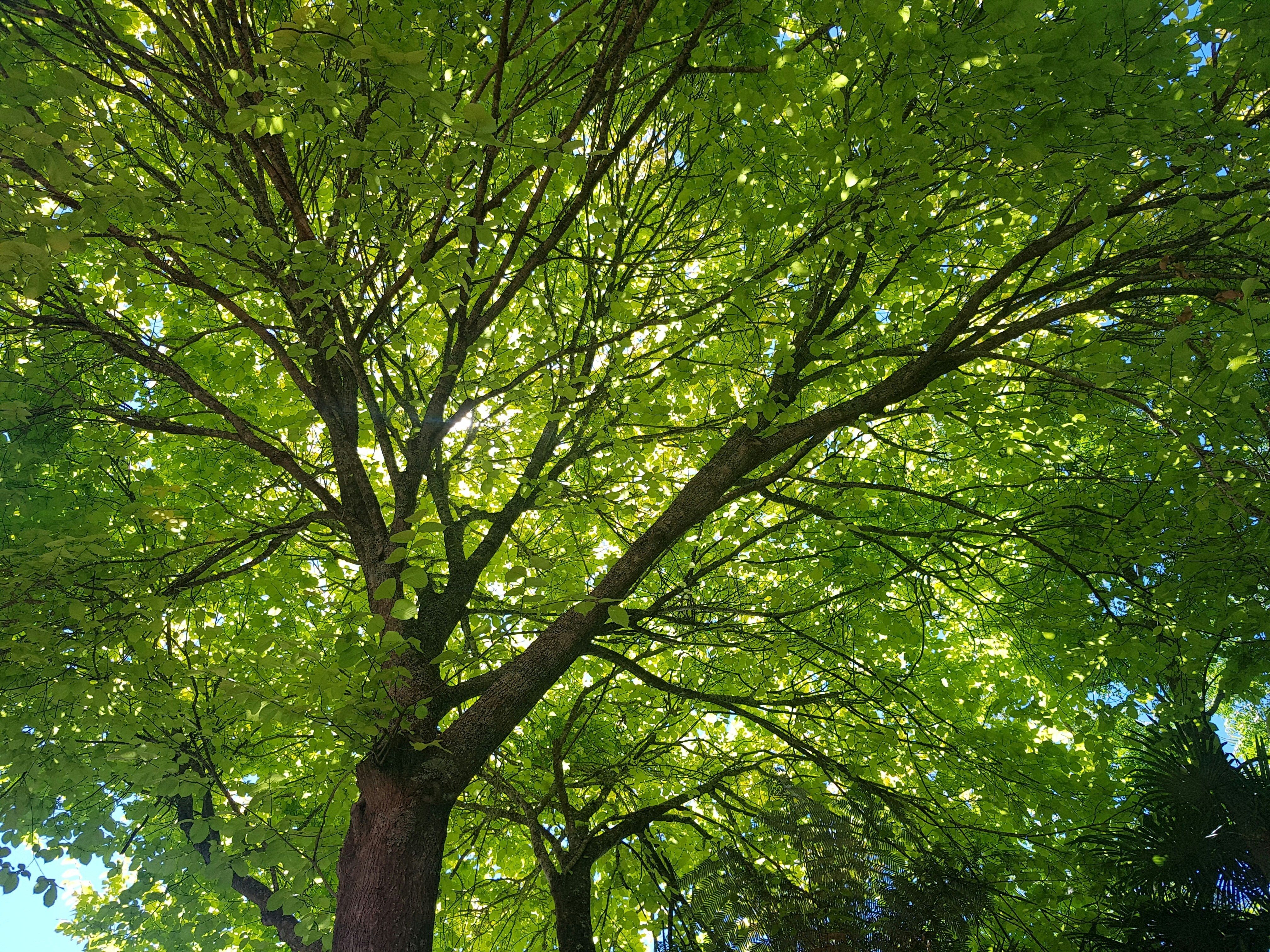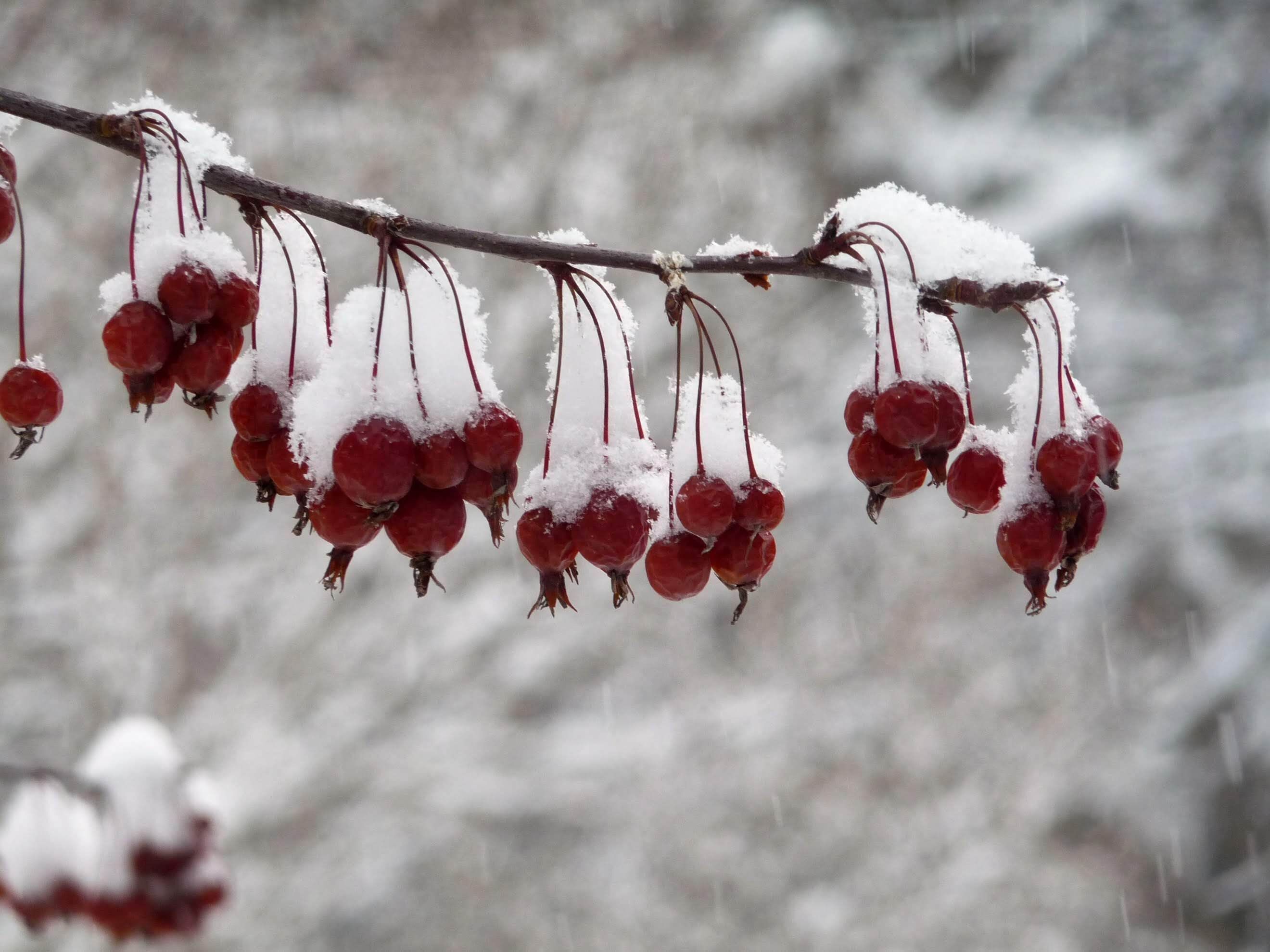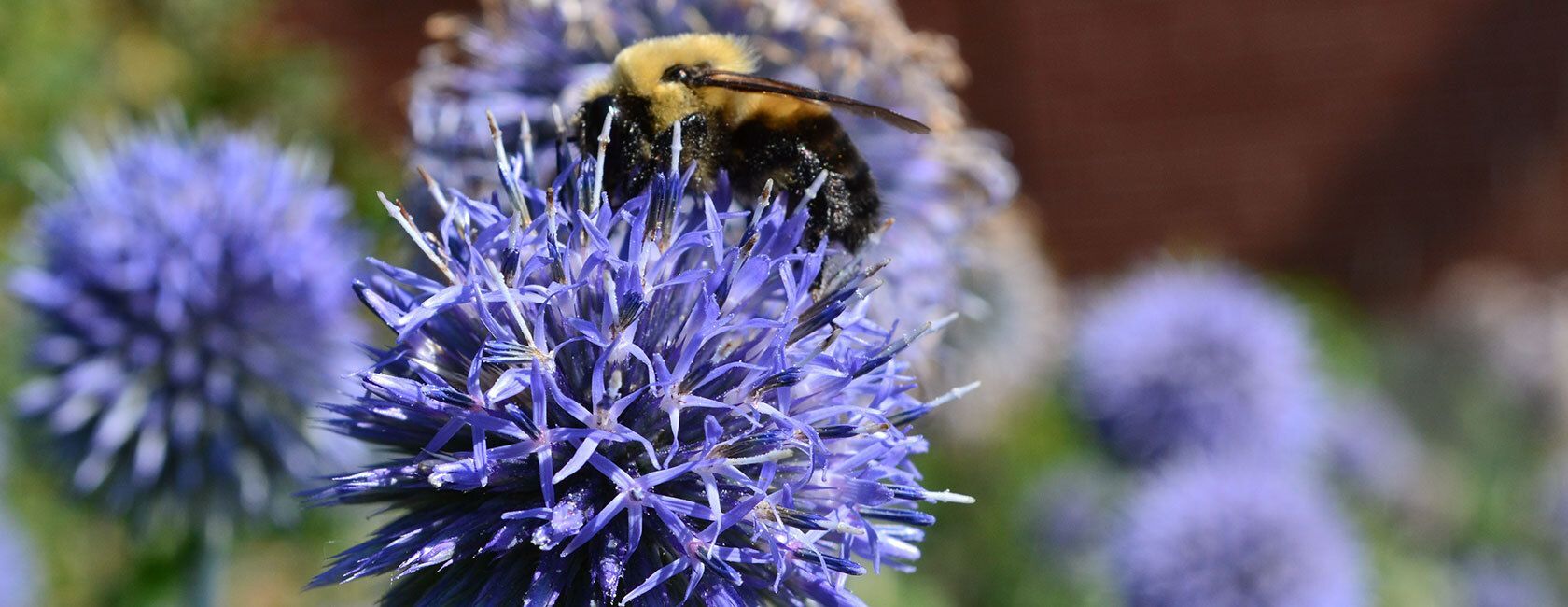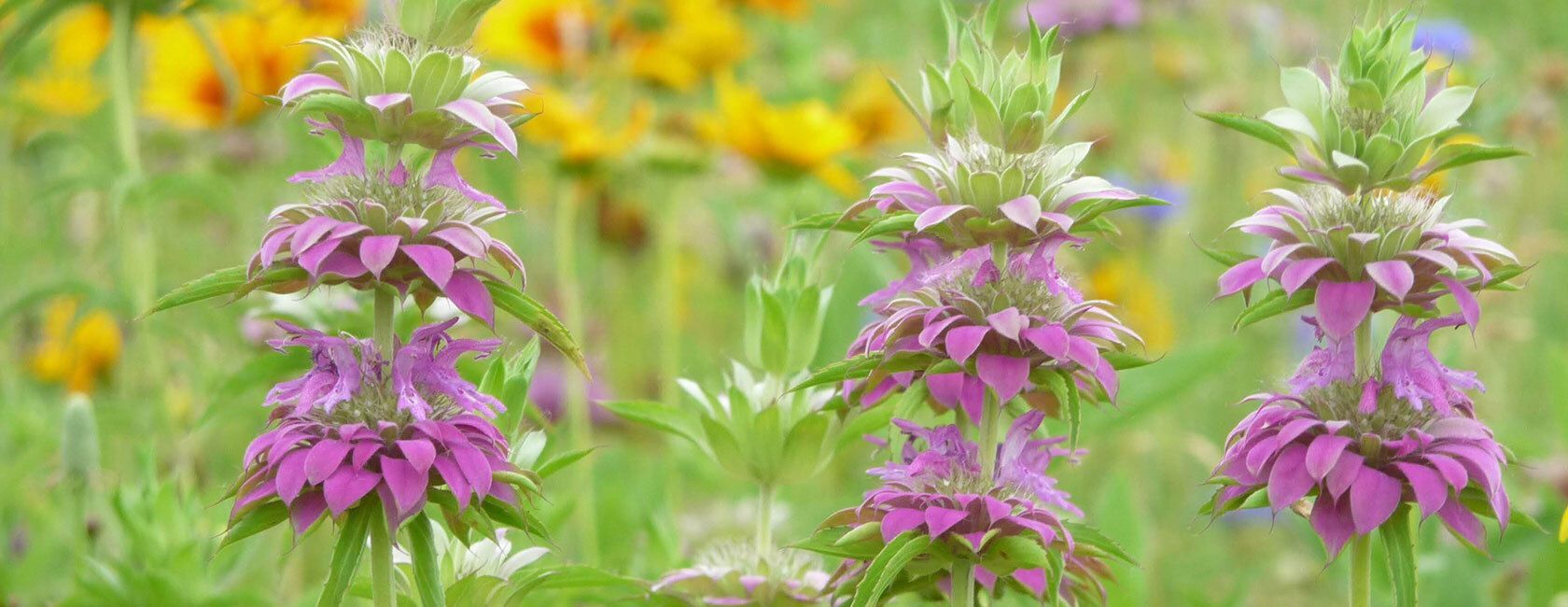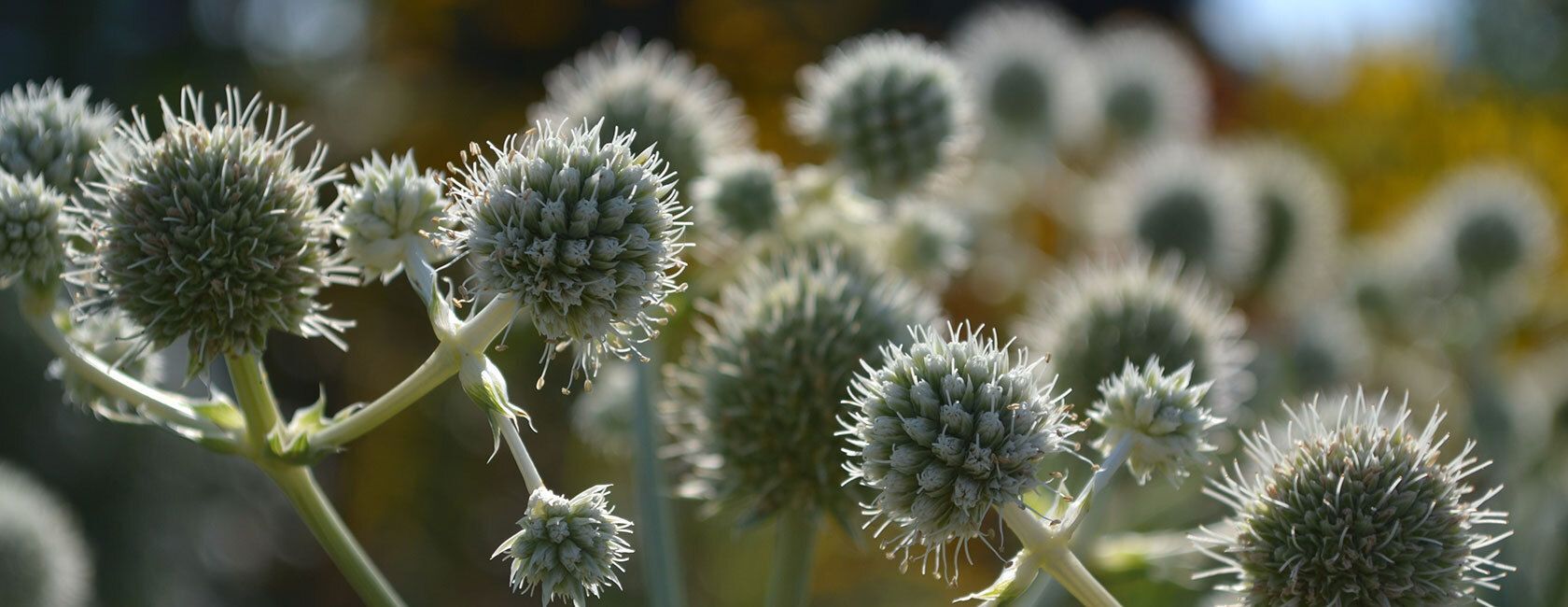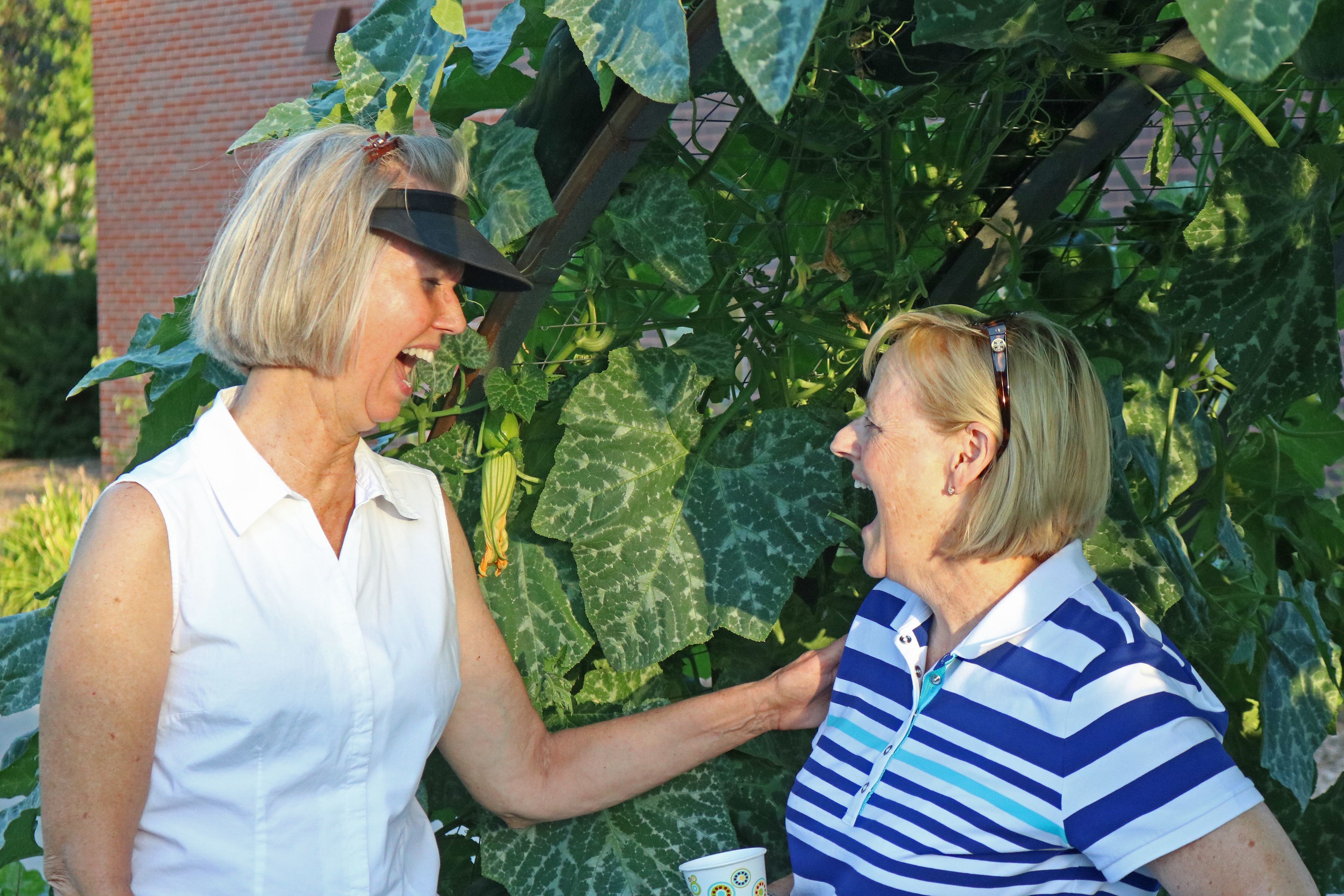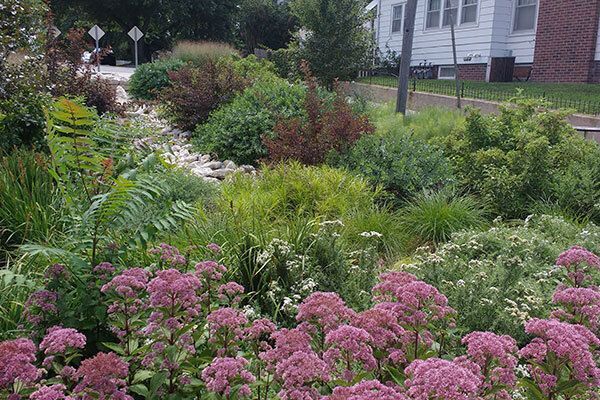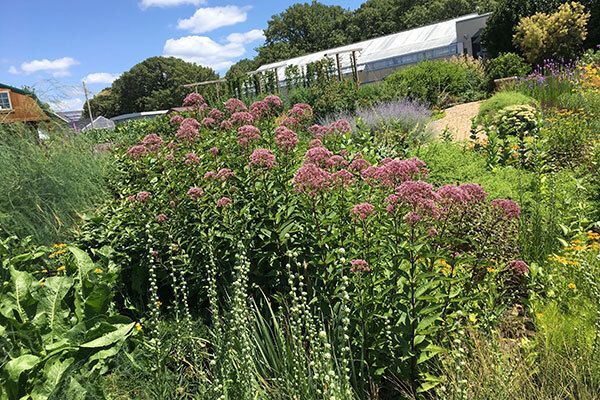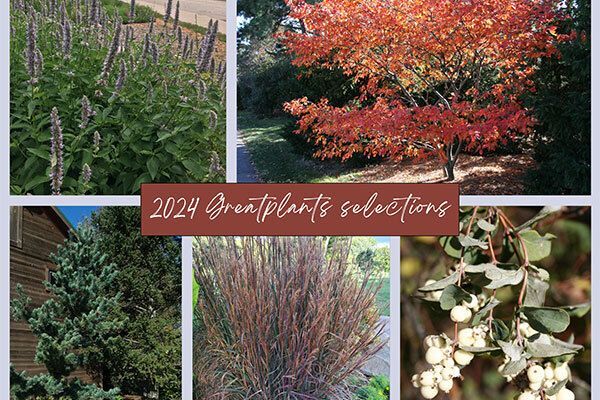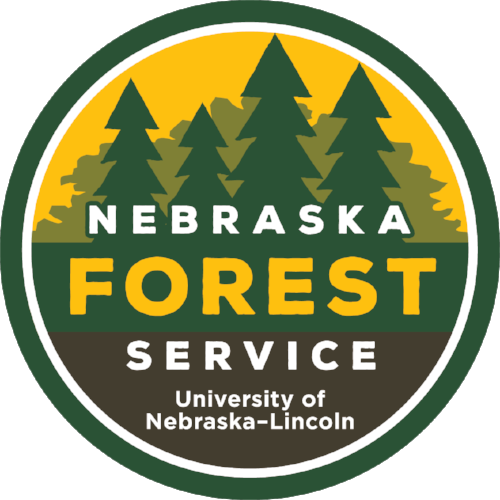
Pictured clockwise from top left: 'Blue Fortune' Hyssop, Shadblow Serviceberry, Snowberry, 'Blackhawks' Blue Stem and Japanese White Pine.
As we continue to contend with drought and warming temperatures, particularly in eastern Nebraska, this year’s GreatPlants selections (a joint program of the Nebraska Statewide Arboretum (NSA) and the Nebraska Nursery and Landscape Association (NNLA), offer gardeners and landscapers Great Plains-proven plant, tree and shrub choices that also provide ecological benefits to our landscapes.
Here are the 2024 GreatPlants selections:
Perennial of the Year: ‘Blue Fortune’ Hyssop (Agastache ‘Blue Fortune’) – ‘Blue Fortune’ is a European hybrid hyssop known for its vigor, cold hardiness and adaptability, qualities that make it an excellent choice for Great Plains gardens. A cross between Agastache rugosa and our native Agastache foeniculum, ‘Blue Fortune’ hyssop’s lavender, bottle brush-like flower spikes are highly attractive to bees and butterflies. Growing 3-4 feet high with a spread of 2 feet wide, it thrives in either moist or dry soils and full sun. In addition to long-lasting blooms, ‘Blue Fortune’ hyssop is known for its mint-scented foliage, which can be dried and made into an aromatic tea.
Tree of the Year: Shadblow Serviceberry (Amelanchier canadensis) – This native tree starts off as a relatively slow-growing, multi-stemmed shrub, eventually maturing into a small tree (15-20 feet high) that thrives best in medium to moist well-drained soil and full sun to part shade. One of the first trees to flower in early spring, its fragrant, white blooms in drooping clusters attract bees just emerging from their winter nests. In late spring, the flowers give way to bunches of blueberry-size fruit, which turn red and then a dark, purple-black in the fall. Offering fiery red-orange color in autumn and a graceful, sculptural structure during the winter, Shadblow serviceberry truly offers four seasons of beauty in the landscape.
Shrub of the Year: Snowberry (Symphoricarpos albus) – Although not especially showy or dramatic, snowberry is a very adaptable, durable, native shrub that does well planted as groundcover, massed on slopes for erosion control or as a filler shrub in front of taller, leggier plantings. The dainty, pink flowers are small but attract a significant number of pollinating insects, and after its leaves drop in the fall, its clusters of snowy white berries offer some winter interest in the yard and garden. Snowberry is versatile, thriving in moist or dry well-drained soil and full sun to part shade.
Conifer of the Year: Japanese White Pine (Pinus parviflora) – This slow-growing evergreen is an excellent choice for small landscapes or properties with limited space. Growing to a height of 25 to 40 feet with a 20-40-foot spread, Japanese white pine has a dense, pyramidal form when young that broadens over time into open branching and a flat-topped crown. Its bundles of blue-green needles form stiff, brush-like tufts on strong, horizontal branches. Japanese white pine performs best in full sun and is relatively tolerant of a wide range of soils if they are well-drained.
Grass of the Year: ‘Blackhawks’ Blue Stem (Andropogon gerardii ‘Blackhawks’) – Shorter and more upright than the typical big bluestem species, this new cultivar emerges in early spring with dark green foliage that turns purple at the tips in late summer. As summer progresses into fall, flowering seed stalks emerge, each topped with dark, reddish-purple seed heads. By late September, ‘Blackhawks’ blue stem deepens to a rich, dark purple that can look nearly black by the end of the season. Easy to grow and long-lived, ‘Blackhawks’ thrives in full sun, growing to 4-5 feet tall and 2 feet wide and very adaptable to a wide variety of soil types
For more information about the 2024 GreatPlants selections, as well as additional landscaping tips and resources, download the 2024 edition of GreatPlants Gardener magazine. You can also listen to the episode about this year's GreatPlants selections on the Bloom Box: Growing Deeper podcast.

